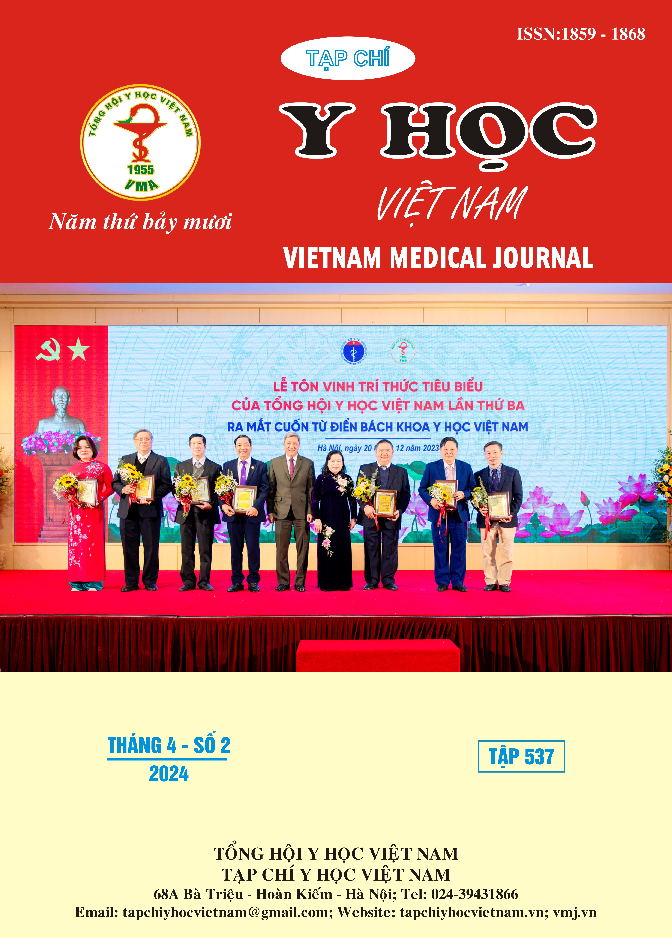MATERNAL AND NEONATAL OUTCOMES OF PLACENTA ACCRETA
Main Article Content
Abstract
Objectives: Evaluation of maternal and neonatal outcomes of treatment of placenta accreta at Hanoi Obstetrics and Gynecology Hospital. Subjects and methods: Retrospective descriptive study of 76 pregnant women diagnosed with placenta accreta and cesarean section scars treated at Hanoi Obstetrics and Gynecology Hospital. Results: A study of 76 single pregnant women with placenta accreta showed that the average amount of blood loss during cesarean was 1,512.0 ± 815.2 ml; 9.3% of cases had complications, including 6.7% of cases of bladder injuries, 1.3% of cases of ureteral injuries, and 1.3% of cases requiring re-operation; The average gestational age at delivery was 36.7 ± 1.2 weeks; apgar 1 minute, 5 minutes less than 7 points accounted for 18.4%, 7.9% respectively; average birth weight 2,615.7 ± 398.0g. Conclusions: The most common intraoperative complication is bladder injuries. The average gestational age by cesarean section is 36.7 weeks
Article Details
Keywords
Placenta accreta, placenta praevia, neonatal outcomes
References
2. G. Garmi andR. Salim (2012). Epidemiology, etiology, diagnosis, and management of placenta accreta. Obstet Gynecol Int, 2012, 873929.
3. S. Wu, M. Kocherginsky andJ. U. Hibbard (2005). Abnormal placentation: twenty-year analysis. Am J Obstet Gynecol, 192 (5), 1458-1461.
4. S. Matsuzaki, R. S. Mandelbaum, R. N. Sangara et al (2021). Trends, characteristics, and outcomes of placenta accreta spectrum: a national study in the United States. Am J Obstet Gynecol, 225 (5), 534.e531-534.e538.
5. Obstetric Care Consensus No. 7: Placenta Accreta Spectrum (2018). Obstet Gynecol, 132 (6), e259-e275.
6. A. G. Eller, T. F. Porter, P. Soisson et al (2009). Optimal management strategies for placenta accreta. Bjog, 116 (5), 648-654.
7. G. Daskalakis, E. Anastasakis, N. Papantoniou et al (2007). Emergency obstetric hysterectomy. Acta Obstet Gynecol Scand, 86 (2), 223-227.
8. H. J. Baldwin, J. A. Patterson, T. A. Nippita et al (2017). Maternal and neonatal outcomes following abnormally invasive placenta: a population-based record linkage study. Acta Obstet Gynecol Scand, 96 (11), 1373-1381.
9. M. Morlando, A. Schwickert, V. Stefanovic et al (2021). Maternal and neonatal outcomes in planned versus emergency cesarean delivery for placenta accreta spectrum: A multinational database study. 100 (S1), 41-49.
10. V. N. Varlas, R. G. Bors, S. Birsanu et al (2021). Maternal and fetal outcome in placenta accreta spectrum (PAS) associated with placenta previa: a retrospective analysis from a tertiary center. J Med Life, 14 (3), 367-375.


